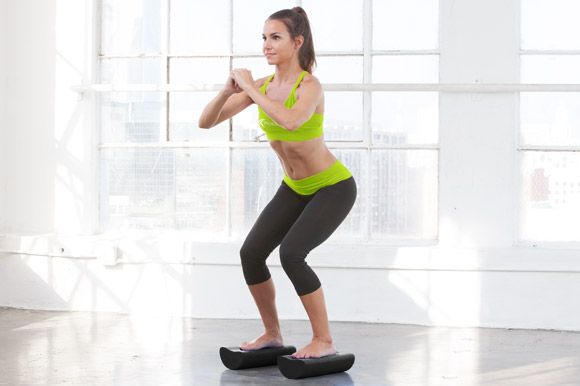
How to Choose the Best Foam Roller: A Practical Buying Guide
There is a reason for the range of foam rollers with different densities, lengths and textures vying for your attention. The structure and design of the foam rollers are specific in the type of relief it provides, so take your time looking for the right one with our buying guide. Below is a breakdown of the foam rollers available in the market, explaining each massage therapy tool type and its unique functions based on needs.
The Different Types of Foam Rollers: Low/High Density (soft/hard), Texture & Size
Low Density: Soft Foam Rollers with a Flat Surface
White or Blue Foam Roller: These are typically the softest foam rollers made of EPE foam offering moderate pressure for releasing knots in larger muscle groups. Since foam rolling can be rather painful, especially when you’re not used to it, these are great to learn on and ideal for beginner or intermediate users. Even after you move on to a higher density foam roller, it can be nice to use the white or blue foam rollers for more sensitive areas like the IT band. They’re also multi-functional: stretching, core and balance exercises, Pilates, yoga, and physical therapy, you name it! Available in 2 sizes that target large or small muscle groups for home/gym use or traveling: 36x6 and 12x6.
Half Foam Rollers: These are foam rollers that look like the white or blue foam roller sliced in half. Made of relatively firm EPE foam, it is great for applying gentle pressure to knots in muscles and light stretching. They are also great for providing an unstable surface for core strengthening and stabilizing exercises. It is more likely that you’ll see these used by personal trainers and physical therapists. If you’re looking for effective trigger point therapy, you probably won’t need this type. Available in 2 sizes that target large or small muscle groups for home/gym use or traveling: 36x3 and 12x3.
High Density: Extra Firm Foam Rollers with a Flat Surface
High Density Foam Rollers: Do not fear high density- since most foam rolling positions can be modified to decrease or increase pressure, this type is also beginner friendly. The black high density rollers and Speckled High Density Rollers are the same. Both are harder and made of eco-friendly high density EPP, but look like the white/blue foam rollers. They are used for balancing exercises and suitable for physical therapy, yoga and Pilates. Deeper massages for trigger point release can be achieved and can be used regularly without being too painful. Most will quickly advance to this version, and realize it's a better way to work out the knots in their muscles. Both colors available in 3 sizes each that can target large, mid or small muscle groups for home/gym use or traveling: 36x6, 18x6, 12x6.
High Density Half-Round Foam Rollers: The half-round version of the high density foam roller provides an unstable surface for core strength, stabilization, balance training, and gentle stretching. These are more beginner and intermediate friendly to use so if you are not sure where to start with a regular foam roller, start out with half-round to give the muscles a good massage. Available in 3 sizes: 36x3, 18x3, and 12x3.
High Density Alternative Options: Lacrosse Ball and Massage Stick
Lacrosse Balls: Massage balls are another form of foam rolling that are particularly convenient and low-cost. Their compact size allows you to customize the massage one specific area at a time. These rubber massage balls are ideal for reaching difficult knots in tough places where standard rollers don't quite fit: shoulder blades, sides of your spine, neck, and calves. The downside is that they can be challenging to keep in place as you roll, and can take longer if there are multiple areas you’re trying to massage.
Massage Stick Roller: Portable and easy to use, the massage stick roller will be your go-to when you want a quick massage wherever you are, rolling out those knots and releasing tension from your muscles. It's a great option if you don't have a lot of pain to work with and just need a mini session to myofascial release to get ready for your workout or for recovery.

Now that you know the types of foam rollers and how they vary, here are a few additional factors to consider:

| Roller | Size (inches) | Texture | Density | Structure | Application | Level | |
|---|---|---|---|---|---|---|---|
 |
High Density Half-Round Foam Roller | 36x3, 18x3, 12x3 | Smooth | High | EPP Foam | Core stabilization Balance exercises Stretching |
Beginner/ Intermidiate |
 |
Flex Half Round Foam Roller | 36x3, 12x3 | Smooth | Low | EVA Foam | Core stabilization Balance exercises Stretching |
Beginner/ Intermediate |
 |
Flex Foam Roller | 36x6, 12x6 | Smooth | Low | EPE Foam | Core stabilization and strength Muscle Progression Stretching Self-myofascial release Stimulates blood circulation |
Intermidiate/ Advanced |
 |
High Density Foam Roller | 36x6 18x6 12x6 | Smooth | High | EPP Foam | Core stabilization and strength Muscle Progression Stretching Self-myofascial release Stimulates blood circulation |
Intermidiate/ Advanced |
 |
High Density Speckled Foam Roller | 36x6, 24x6, 18x6, 12x6 | Smooth | High | EPP Foam | Core stabilization and strength Muscle Progression Stretching Self-myofascial release Stimulates blood circulation |
Intermidiate/ Advanced |
 |
Massage Stick Roller | 18.3x1.45 | 9 Massage Rollers | High | ABS Plastic/Iron/PP + TPR | Self-myofascial release Stimulates blood circulation Designed to release knots deep inside your muscles |
Beginner/ Intermediate |
 |
Lacrosse Balls | 2.5 | Smooth | High | Rubber | Self-myofascial release Stimulates blood circulation Designed to release hard-to-reach knots |
Beginner/ Intermediate |
We hope you found our practical guide to finding the best foam roller helpful and would love to hear from you on which foam rollers worked best for you. Leave a comment below or follow us on social media!


